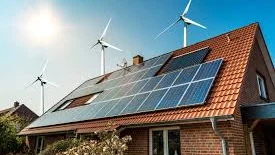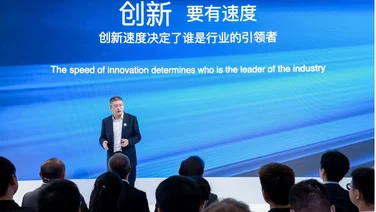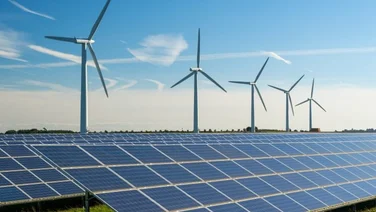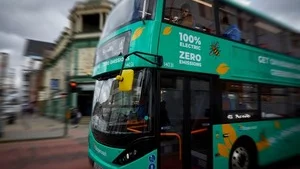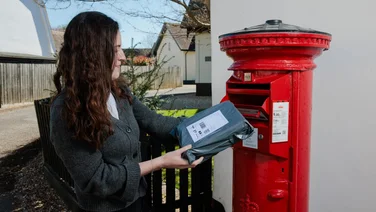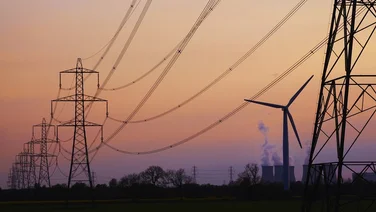Climate change is the most pressing issue facing the world right now, which makes renewable energy essential to helping humans live on this planet sustainably.
It’s a daunting task, make no mistake, but there are positive solutions emerging all around the world. Among them are community energy projects, and we’re here to help explain what these projects are and how you can get involved.

What is a community energy project?
A community energy project is where people come together to manage, reduce, or generate their own energy. This can be done in many ways, but generally community energy projects are focused on renewable energy.
They’re an important way for local communities to gain a better knowledge of their energy needs and of what they can do to help make the world a greener place.
It’s worth mentioning that this isn’t the same as the Rent-a-Roof initiative, which leases the entirety or part of your roof to energy companies so they can profit from any excess electricity generated by the solar panels.
Community energy projects don’t necessarily have to be complicated. For example, a group of people might all commit to collectively switching to a greener energy supplier.
Or, they might decide to reduce one energy-wasting part of their lives (such as not boiling the kettle for a week).
Of course, if the will — and funding — is there, then a community energy project can be scaled up to include things like a community solar panel farm, a wind turbine, or a community-wide adoption of better insulation for homes.
At the heart of community energy projects is the principle of local ownership, local engagement, and local leadership, with an emphasis on ensuring the project benefits all those in the community.
Right now, there are around 5,000 community energy projects across the UK.
Why start a community energy project?
Starting a community energy project is a fantastic way for local communities to get more involved in their energy needs.
Not only can the community learn more about their energy consumption, but they can make tangible changes to the way they consume energy.
This way, communities can take greater ownership over their own energy, working together to ‘greenify’ their lives.
It’s an exciting opportunity to build stronger communities too, as it gives everyone involved a shared goal they can all work towards.
Take the earlier example of collectively deciding to switch off the kettle for a week. It might sound trivial at first, but something like this represents the first step a community can take towards better sustainability.
Here are six more reasons for starting a community energy project:
- They reduce energy poverty — community energy projects democratise energy, working to help everyone involved get access to low-cost or even free energy.
- They cut the money going into fossil fuels — renewable energy projects at the local level limit how much money goes to larger corporations profiting from fossil fuels.
- They help educate others on sustainable energy — you can use the project as an opportunity to give people a better understanding of climate issues and sustainable energy.
- They create more local, circular economies — people involved in community energy projects are more likely to use local or regional manufacturers, keeping money within the community.
- They show other communities what can be done when people work together — successful community energy projects build confidence and show that local groups can take ownership of their energy.
- They are becoming more necessary — upcoming bans on things like gas-powered boilers make finding green solutions a more pressing need.
How to set up a community energy project
How you set up a community energy project depends on a few key factors. Namely:
- Where you live
- What opportunities are available in your local area
- Whether or not you can obtain permission
For the first point, where you live will have an impact on the potential scale of your community energy project.
If, for example, you wanted to set up a community-run solar farm in the middle of a city, you’ll quickly realise that space is at a premium and a solar farm probably isn’t viable.
However, if you are in a more rural area with access to land, then setting up a solar farm becomes more feasible.
Indeed, securing the land to begin a community energy project is often the most difficult hurdle. What most community energy projects do is get a lease from a landowner, which is usually far cheaper than buying the land outright.

How to get funding for a community energy project
Getting funding for a community project is often a make-or-break moment, at least in terms of the project’s potential scale.
If your community wants to set up something like a solar panel or wind turbine farm, then obviously the amount of funding needed will be much higher than if you were just looking to better insulate some houses.
There are tons of other avenues for funding a community energy project, with many people opting to go via their local council.
Alternatively, members of the community can contribute from their own pockets, but it’s important to make sure all finances are properly managed and distributed if you go this route.
If you’d like more information on the types of funding available, Community Energy England provides details on a range of funding opportunities.
Challenges you might face
As with anything involving a community, there’s always the possibility that one or more people might disagree with the project.
Some people could get apprehensive about the impact a project might have on their energy supply, or that the project might end up costing them more than they’re willing to spend.
Another challenge to anticipate are people who see renewable energy installations, such as solar panel farms or wind turbines, as blights on the landscape.
Because of this, properly planning a community project is essential to avoiding issues down the line. Getting the community involved from the get-go and keeping everyone in the loop about potential plans will go a long way towards building confidence in the project!
Navigating the legal parts
Perhaps the most daunting challenge is the prospect of making sure your community energy project is legal. It’s not quite as terrifying as it might sound, though. To put it simply, navigating the legal aspects of a community energy project is mostly about ensuring you have the legal framework to raise funds, receive grants, use whatever ground you intend to use, and get insurance. It’s also about receiving and distributing any income gained from the project (if you were to sell any excess power from a solar farm, for example).
Another important legal issue is that of potential financial shortfall for any members involved in the project. Because a community energy project can often involve individuals investing their own money, it is essential to provide cover for members who might fall into difficult circumstances. After all, what use is a community project if members of the community aren’t protected?
Next steps
There are tons of useful resources available for getting started with a community project. The Energy Saving Trust has a fantastic guide on community energy projects, with links to regional pages and some fascinating examples of successful projects. You can find reliable information on gov.uk too, which includes some handy links to funding initiatives, including the Urban Community Energy Fund.

